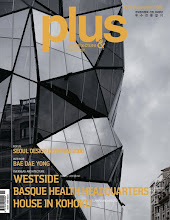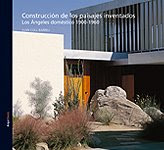Saturday, June 22, 2013
Tribute to Javier Carvajal in Bilbao / Homenaje a Javier Carvajal en Bilbao
Our friends from Colegio Oficial de Arquitectos Vasco-Navarro host a tribute to Javier Carvajal on July 4, 2013 at 7:30 PM in the Auditorium of the association headquarters in Bilbao (Alameda de Mazarredo, 71, Bilbao, opposite the Guggenheim Museum), perfectly organized by M. Arch. Juan Ignacio Intxausti. I am excited to be there, and we hope to see you there to remind an architect who changed our way of working and marked our lives.
Nuestros amigos del Colegio Oficial de Arquitectos Vasco-Navarro acogen un homenaje a Javier Carvajal el próximo 4 de julio de 2013 a las 19:30 en el Salón de Actos de la sede colegial de Bilbao (Alameda de Mazarredo, 71, Bilbao, enfrente del Museo Guggenheim) perfectamente organizado por Juan Ignacio Intxausti. Allí espero estar puntualmente, y allí esperamos a todos los que podáis venir para recordar a un arquitecto que cambió nuestra manera de trabajar y marcó nuestras vidas.
Friday, June 14, 2013
Javier Carvajal, adiós
This morning, my dear teacher Javier Carvajal has died in Madrid. Now, the memories are piling up in my brain. Today I can only say goodbye. Farewell! I don't know if we will meet again.
Esta mañana ha fallecido en Madrid mi querido maestro el arquitecto Javier Carvajal. Los recuerdos se amontonan ahora en mi memoria. Hoy solo puedo decir adiós. ¡Adiós! No sé si nos volveremos a ver.
Tuesday, June 11, 2013
Invisible architecture? / ¿Arquitectura invisible?
John Howell, a Professor of Physics at the University of Rochester, decided to tackle an unusual DIY project. With the help of his 14 year-old son, Benjamin, he built three simple, but surprisingly effective optical cloaking devices with inexpensive, off-the-shelf materials. Cloaking is a common topic both in popular culture and in the scientific community. Cloaking means hiding an object from view at specific frequencies, and different types of cloaking have been recently demonstrated in labs around the world.
Howell and his son built three different devices to show that it is possible to do optical, unidirectional cloaking cheaply, and for large objects. Logically, I wonder greedily how can we transform the architecture with this...
John Howell, un profesor de física en la Universidad de Rochester, decidió abordar un inusual proyecto de bricolaje. Con la ayuda de Benjamin, su hijo de 14 años de edad, construyó tres simples pero sorprendentemente eficaces dispositivos ópticos de camuflaje con materiales baratos y accesibles. La invisibilidad es un tema común en la cultura popular y en la comunidad científica. Invisibilidad significa ocultar un objeto de la vista en frecuencias específicas. Diferentes tipos de encubrimiento se han probado recientemente en los laboratorios de todo el mundo.
Howell y su hijo construyeron tres diferentes dispositivos para mostrar que es posible construir una ocultación óptica, unidireccional y barata que funciona con objetos grandes. Lógicamente, me pregunto codiciosamente cómo podemos transformar la arquitectura con esto...
Subscribe to:
Posts (Atom)


















